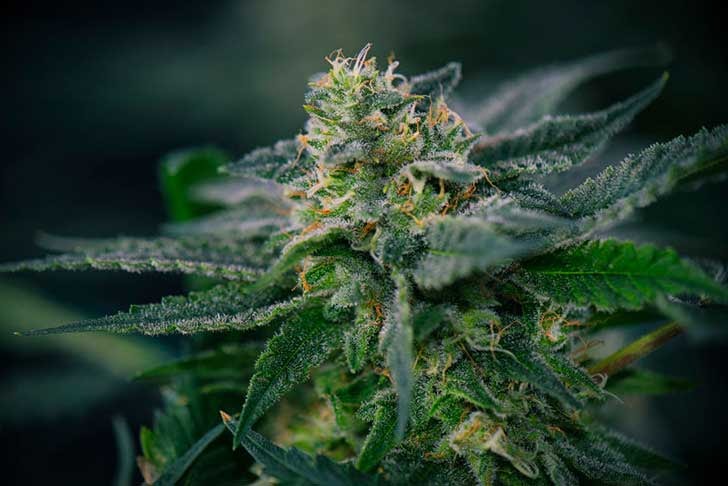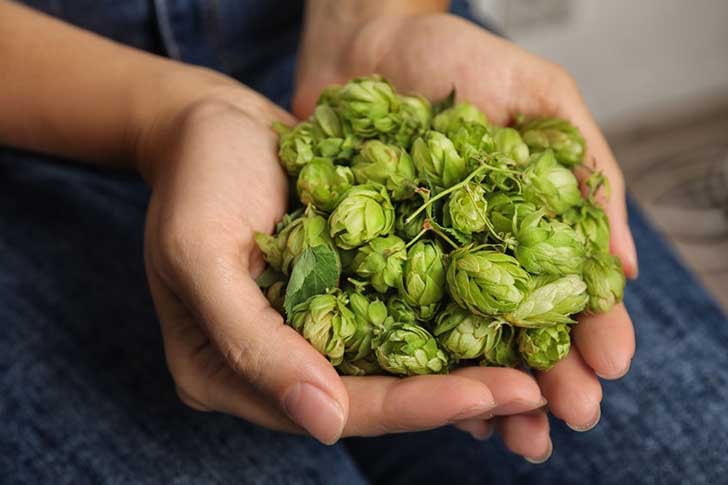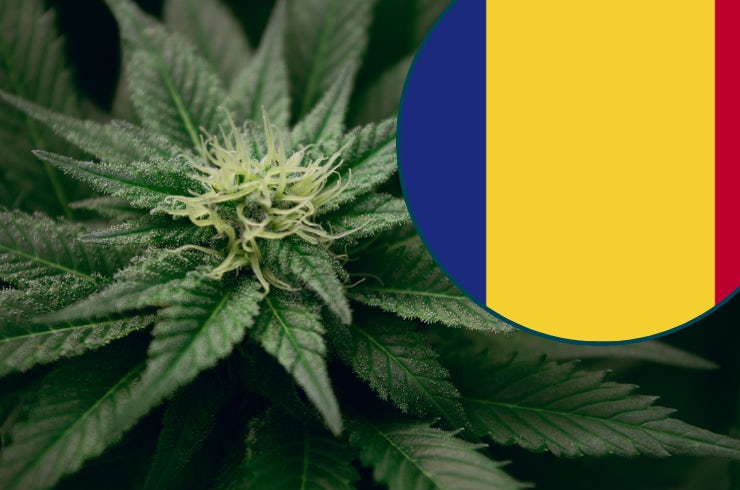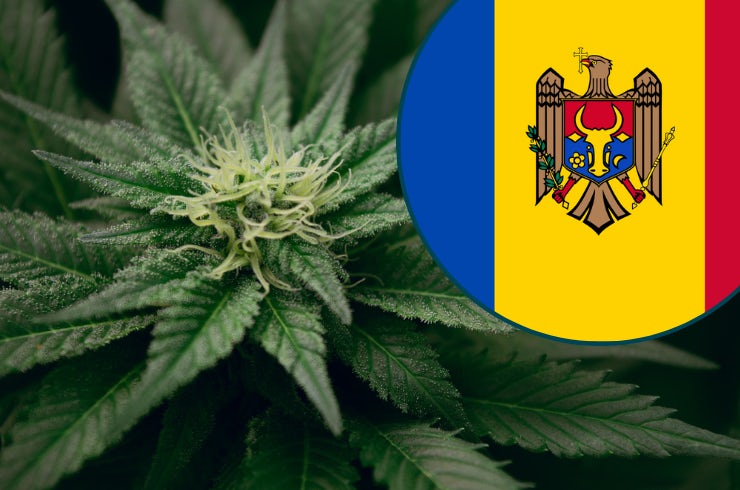One of the more uncommon terpenes you may encounter is Terpinolene. Colloquially considered to be one of the “rarer” terpenes found in cannabis plants, it is a monoterpene known for its fresh aroma. A terpene is one of several aromatic molecules that give plants their unique effects. Terpenes are found in the resinous glands of cannabis plants (trichomes) and contribute to chemovar’s distinct properties. You can find Terpinolene present in many other plants and herbs such as (but are not limited to!) apples, sage, turmeric leaf, pines, and cardamon, but the highest concentrations are in parsnip.
Terpinolene’s aroma is commonly described as floral, fresh, and woodsy. Some think of it as a combination of pine scents with citrus and floral hues. While the psychotropic effects of Terpinolene are still being investigated, a 2013 research paper characterized its effect on mice as sedating. However, subjective reports suggest Terpinolene-dominant chemovars to actually be stimulating. This might be due to the combination with THC. This terpene is also a potent antibacterial, antimicrobial and antifungal agent that demonstrates antioxidative properties. It may also help reduce proliferation of cancer cells.
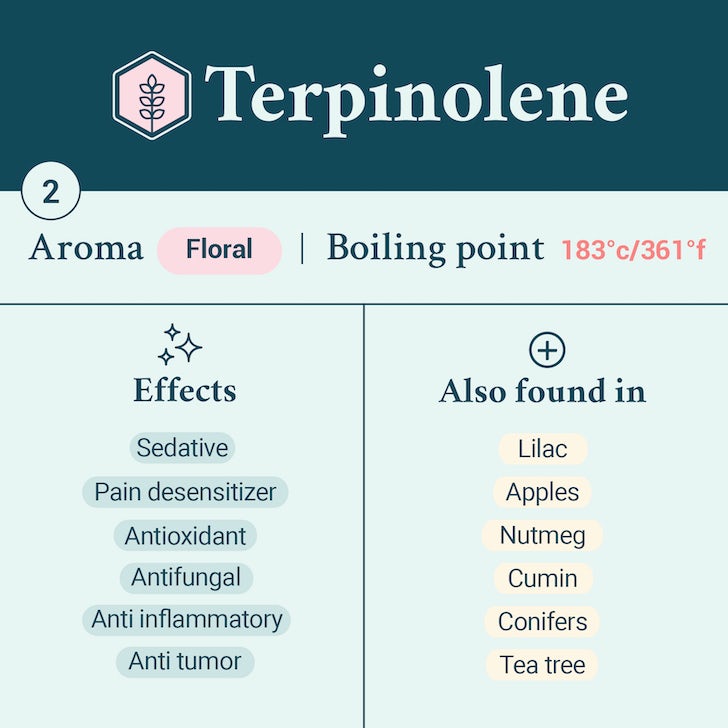
What are its effects? What else is it used for?
As Terpinolene is a terpene that generally appears in trace amounts the psychotropic effects of this terpene have yet to be fully evaluated. The 2013 research paper mentioned earlier also noted that the inhalation of Terpinolene was able to produce a sedating effect in mice that could not smell. This idea of it as a potential sedative is furthered by the entourage effect which postulates that, in theory, Terpinolene could be used with other terpenes such as Linalool to enhance their effects.
The most promising aspect of Terpinolene research is how this terpene interacts with cancer. Research published in 2011 examining its effects on human cells found that it reduced the expression of AKT1, a protein involved in cell proliferation and apoptosis. They also noted that it had a distinct effect when it came to inhibiting cell proliferation.
A 2013 paper examining the effects of Terpinolene on cancerous rat brain cells found that, “…TPO [Terpinolene] is a potent antiproliferative agent for brain tumour cells and may have potential as an anticancer agent, which needs to be further studied.”
Its fresh scent also makes it a highly desirable compound in the fragrance/cosmetic industry. As such you may find it featured in a variety of soaps, perfumes and lotions.
How common is it in cannabis?
Terpinolene is currently found in cannabis plants in small, trace amounts. It’s also worth noting that Terpinolene-rich plants tend to have a high THC content and are often classified as “sativas.” This is worth bearing in mind for any medical cannabis patients who may be sensitive to THC’s effects.
As chemovars can vary in terpene content from grower to grower and even batch to batch, it’s a good idea to check out a flower’s certificate of analysis whenever possible to determine terpene profiles.
One study analyzed 233 samples representing 30 cultivars to identify terpene content. They found Terpinolene at ND (not detectable) quantities in all but two chemovars: Jack Herer and Trainwreck.
Current research
Terpinolene’s antioxidant properties are currently being evaluated for clinical applications. One promising 2005 study found a combination of Terpinolene along with flavonoids or Vitamin E to be a potent enough antioxidant that it may be an effective treatment against heart disease.
Another research paper published that year sought out to examine potential antimicrobial activity of Diplotaenia damavandica essential oil, a plant native to Iran. The essential oil extracted from the plant was shown to display antibacterial activity against several microbial agents including Staphylococcus aureus and Escherichia coli. The study’s authors also noted that it was an effective antifungal against the acne causing Propionibacterium.
References:
https://link.springer.com/article/10.1007/s11418-012-0732-1
https://pubmed.ncbi.nlm.nih.gov/28826544/
https://www.ncbi.nlm.nih.gov/pubmed/20552523%20
https://www.ncbi.nlm.nih.gov/pubmed/24590926
https://www.ncbi.nlm.nih.gov/pubmed/22740904
https://www.ncbi.nlm.nih.gov/pmc/articles/PMC3362481/
https://www.ncbi.nlm.nih.gov/pubmed/24084350
https://www.ncbi.nlm.nih.gov/pmc/articles/PMC5436332/
https://www.ncbi.nlm.nih.gov/pubmed/16008117
http://www.znaturforsch.com/ac/v60c/s60c0821.pdf
Sign up for bi-weekly updates, packed full of cannabis education, recipes, and tips. Your inbox will love it.

 Shop
Shop Support
Support